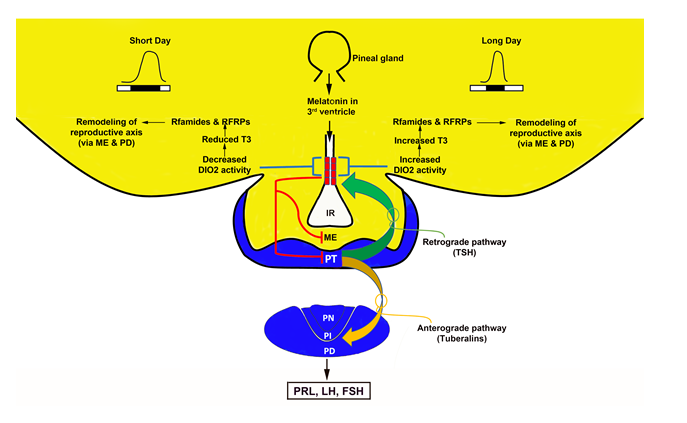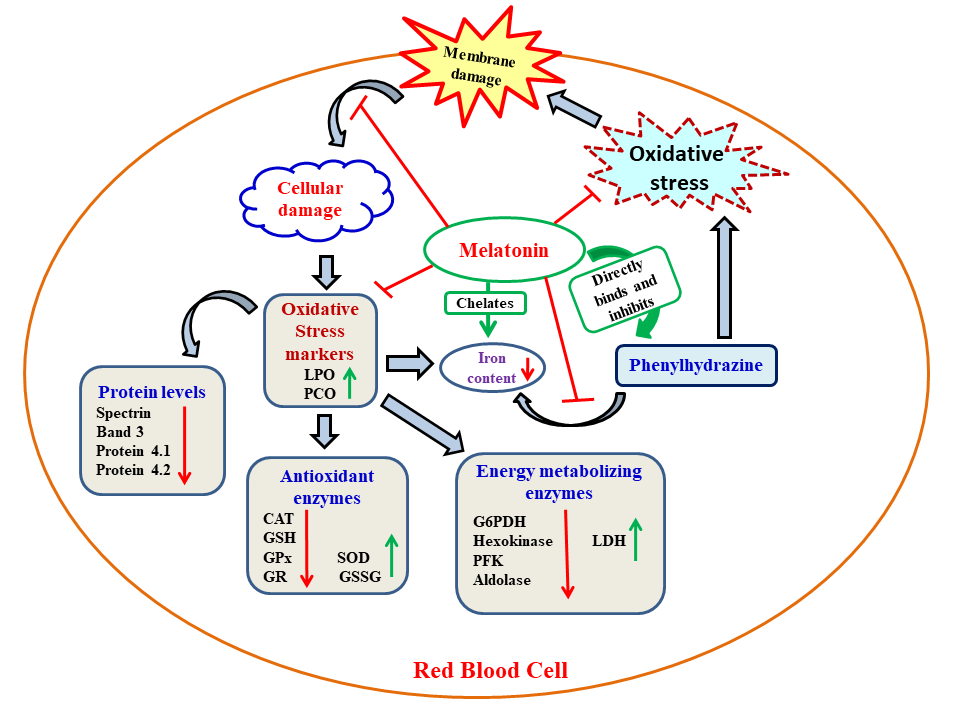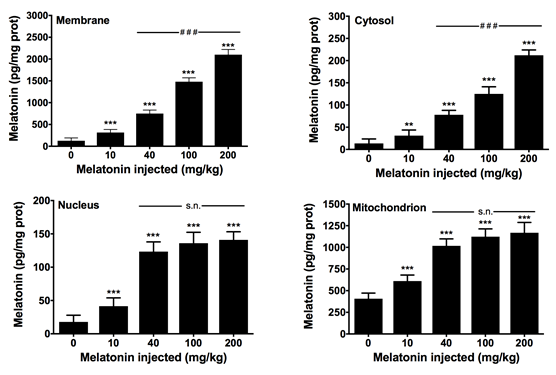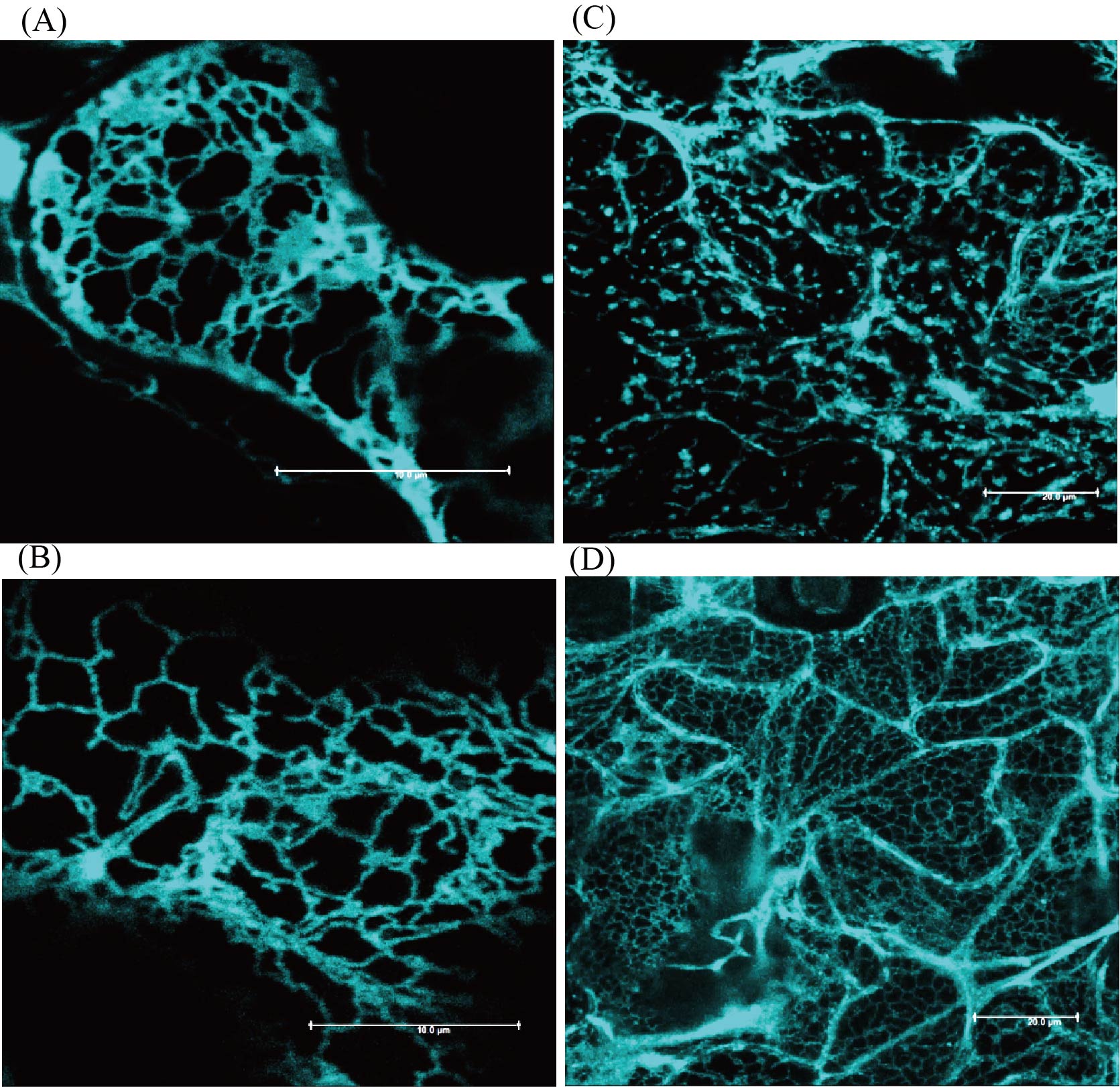
Phenylhydrazine (PHZ) treatment induces the red blood cell (RBC) phenotype changes resembling the severe β-thalassaemia including the rigidly and mechanically unstable membranes of RBC in conjunction with the oxidized alpha-globin chains which further connect to the membrane skeleton. These alterations are related to the RBC oxidative stress and iron-overloading. Melatonin as a potent antioxidant effectively prevents RBC deformation caused by PHZ treatment. The result suggest that melatonin may have the therapeutic potential to β-thalassaemia in particular and also to other hemolytic anemias involving oxidative stress in general.
CON: control; PHZ: phenylhydrazine; M40: melatonin (40 nmoles/ml); PM40: PHZ plus melatonin (40 nmoles/ml)









